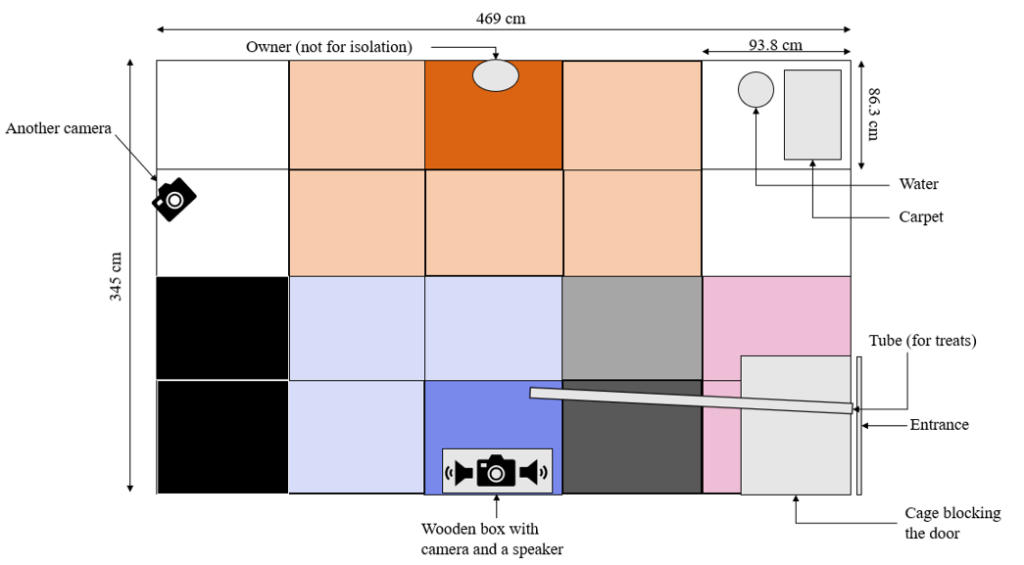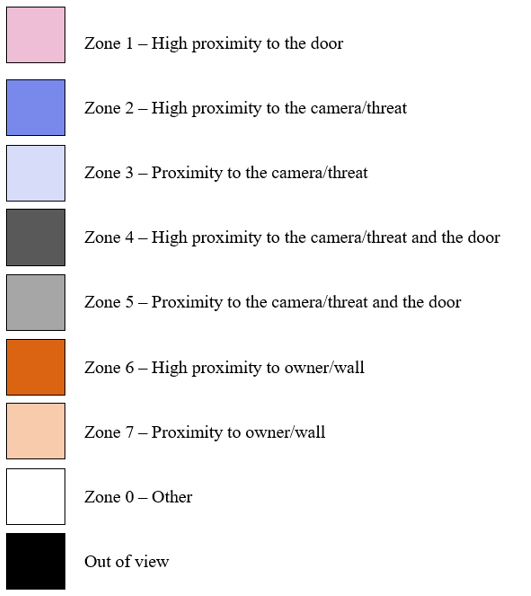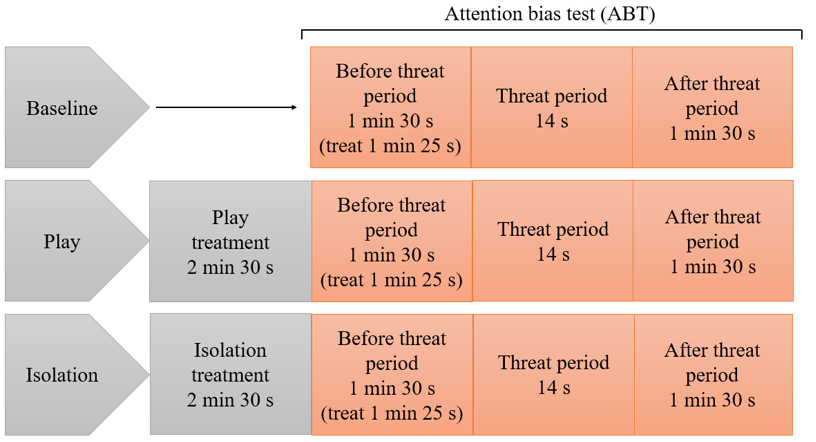Animals
My study included pre-recorded videos of 26 dogs: 14 dogs with separation anxiety and 12 dogs without separation anxiety. The dogs were between 1-12 years, and the majority of the dogs were purebreds. All information about the dogs, including if they had separation anxiety or not, was received by asking the owners.
Testing arena
The testing arena consisted of a room where plastic bags, together with duct tape, was used for blocking visibility of the door. Duct tape was also used to mark zones on the floor. There were two cameras set up at different angles on the walls. Loudspeakers were set up beside one of the cameras, which was connected to a computer through Bluetooth. The speakers and the camera were hidden with a wooden box. There was also a tube used for giving treats that started by the door and ended close to the wooden box, and a dog cage in front of the door to block the exit. The dog cage was there since the door was open due to being able to pass treats through the tube


Experimental procedure
Three attention bias tests (ABTs) which included an auditory threat in the form of a lion roar was performed on each dog with three different treatments prior to the ABT. The first was baseline (neutral) which had no treatment prior to the ABT. The second was play (positive), which had a play treatment before the ABT where the dog got to play with their owner for 2.5 min. The third one was isolation (negative) which had an isolation treatment prior to the ABT where the dogs were alone for 2.5 min. The owner was present in baseline and play, not during the isolation ABT.

Behaviours analysed
Several behaviours were analysed, and catagorised into:
- Attention
- Activity and vocalisation
- Body placement and vigilance
- Exploring
- Stress-related
Statistical analysis
R was used for analysing the data. The data was analysed using Mixed Model ANOVA. More specifically, due non-normally distributed data, each behaviour was analysed using a Generalised Linear Mixed Model (GLMM) ANOVA. For some behaviours, a proportion of how much time a dog spent performing a behaviour could not be analysed in R due to a lot of zeros, or a lot of numbers close to zero. If this happened the data would be converted into binary (0/1). A poisson regression mixed model was used to analyse frequencies (count data). Tukey adjusted post-hoc multiple comparisons were performed with package emmeans to analyse on what levels a factor (separation anxiety, ABT, and sex) was significant.